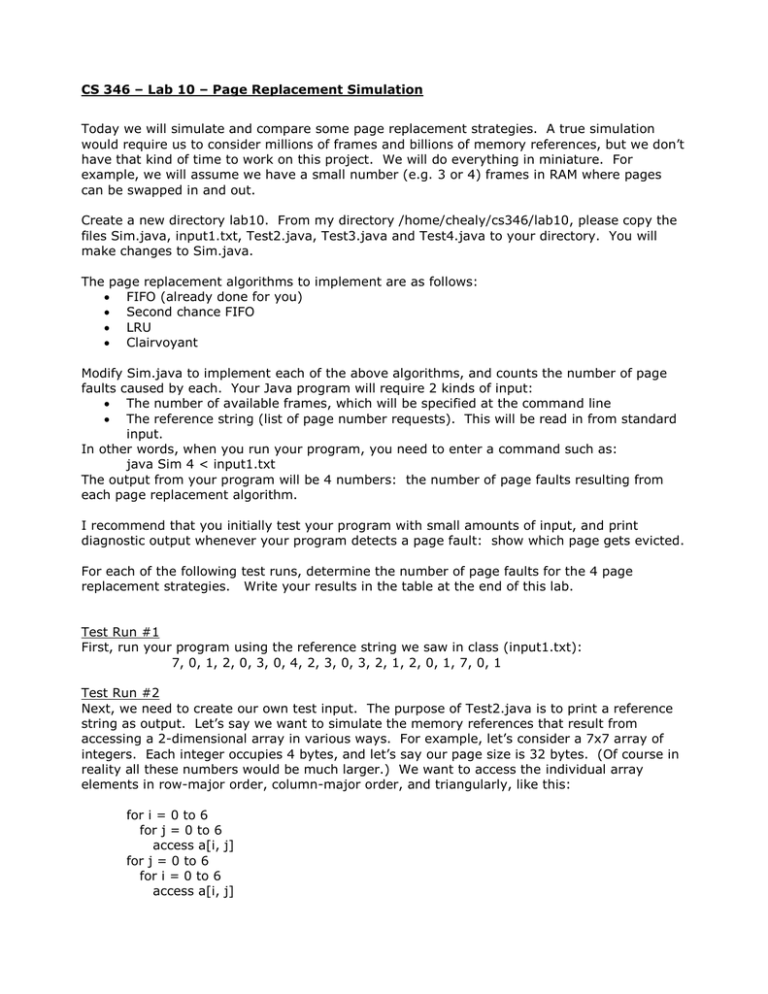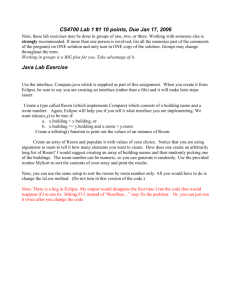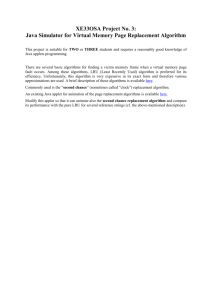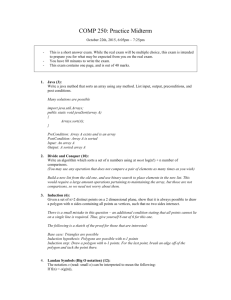lab10
advertisement

CS 346 – Lab 10 – Page Replacement Simulation Today we will simulate and compare some page replacement strategies. A true simulation would require us to consider millions of frames and billions of memory references, but we don’t have that kind of time to work on this project. We will do everything in miniature. For example, we will assume we have a small number (e.g. 3 or 4) frames in RAM where pages can be swapped in and out. Create a new directory lab10. From my directory /home/chealy/cs346/lab10, please copy the files Sim.java, input1.txt, Test2.java, Test3.java and Test4.java to your directory. You will make changes to Sim.java. The page replacement algorithms to implement are as follows: FIFO (already done for you) Second chance FIFO LRU Clairvoyant Modify Sim.java to implement each of the above algorithms, and counts the number of page faults caused by each. Your Java program will require 2 kinds of input: The number of available frames, which will be specified at the command line The reference string (list of page number requests). This will be read in from standard input. In other words, when you run your program, you need to enter a command such as: java Sim 4 < input1.txt The output from your program will be 4 numbers: the number of page faults resulting from each page replacement algorithm. I recommend that you initially test your program with small amounts of input, and print diagnostic output whenever your program detects a page fault: show which page gets evicted. For each of the following test runs, determine the number of page faults for the 4 page replacement strategies. Write your results in the table at the end of this lab. Test Run #1 First, run your program using the reference string we saw in class (input1.txt): 7, 0, 1, 2, 0, 3, 0, 4, 2, 3, 0, 3, 2, 1, 2, 0, 1, 7, 0, 1 Test Run #2 Next, we need to create our own test input. The purpose of Test2.java is to print a reference string as output. Let’s say we want to simulate the memory references that result from accessing a 2-dimensional array in various ways. For example, let’s consider a 7x7 array of integers. Each integer occupies 4 bytes, and let’s say our page size is 32 bytes. (Of course in reality all these numbers would be much larger.) We want to access the individual array elements in row-major order, column-major order, and triangularly, like this: for i = 0 to 6 for j = 0 to 6 access a[i, j] for j = 0 to 6 for i = 0 to 6 access a[i, j] for i = 0 to 6 for j = 0 to i access a[i, j] for j = 0 to 6 for i = 0 to j access a[i, j] You may use any base address you wish, such as 0. Let’s assume that the entries of the array are stored in row-major order, so that the array element addresses are as follows: Address = base address of array + 4 * (7*i + j) Page number = Address / 32 When your run this program, redirect its output to a file called input2.txt so that it can be later used as input to your page replacement simulator. This technique is also useful for test runs 3 and 4. Test Run #3 Same as test run #2, but we will approximately double the dimensions, and only do triangular access to the array. The array will be 15x15 of integer, and the page size will be 64 bytes. In Test3.java, we simulate these data accesses. Redirect the output to input3.txt. for i = 0 to 14 for j = 0 to i access a[i, j] for j = 0 to 14 for i = 0 to j access a[i, j] Address = base address of array + 4 * (15*i + j) Page number = Address / 64 Test Run #4 For your reference string, generate 1,000 random numbers in the range 1-5. Note that we want to experience page faults only occasionally, so we make sure that the number of referenced pages is 1 more than the number of available frames. For instance, if we had 8 frames, we’d want to experiment with page numbers 1-9. Redirect the output to input4.txt. Findings of experiments Enter the number of page faults here: Algorithm FIFO 2nd chance FIFO LRU Clairvoyant Test run #1 Test run #2 Test run #3 Test run #4






